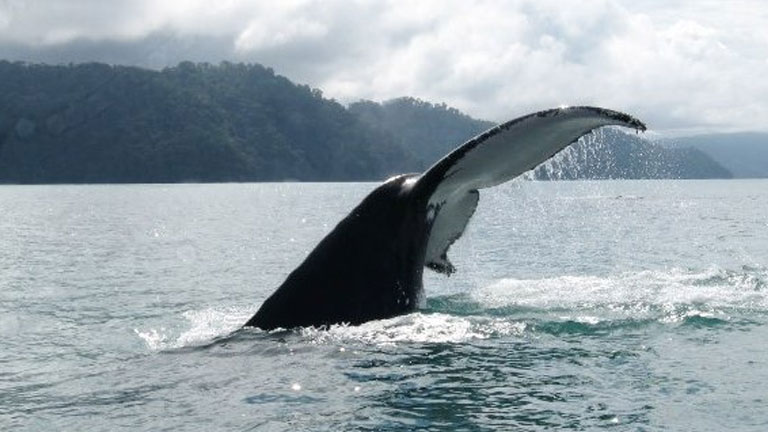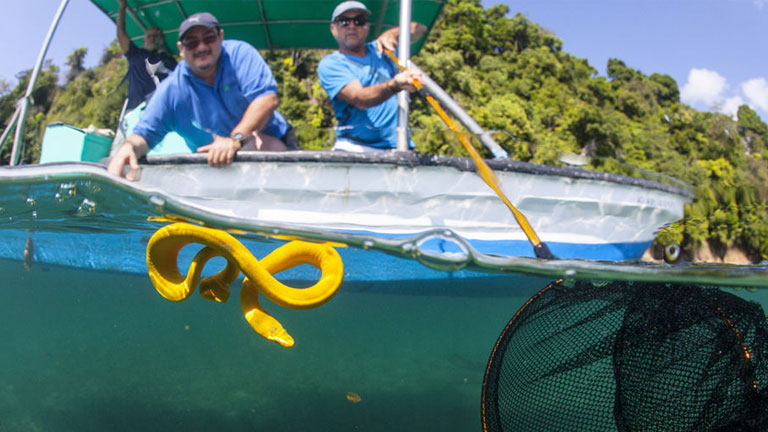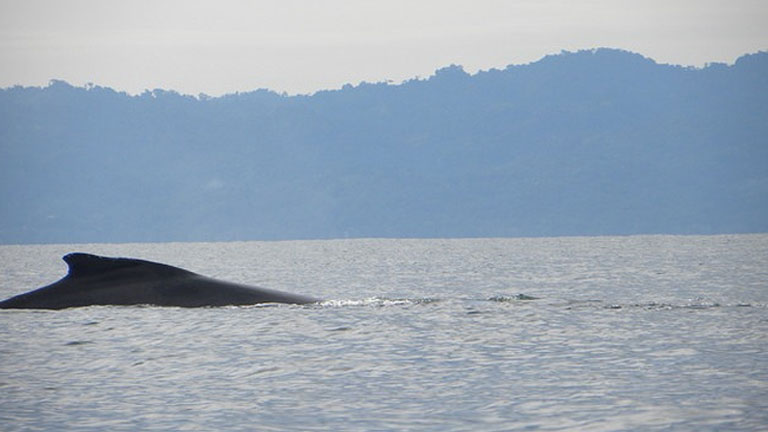Puerto Jimenez, Osa Peninsula
Now is the time to see migrating humpback whales on whale watching tours at Playa Nicuesa Rainforest Lodge in Golfo Dulce - a top Costa Rica wildlife spot. Migrating humpback whales come to Golfo Dulce, Costa Rica between July and October.  You can see an abundance of Costa Rica wildlife at Playa Nicuesa Rainforest Lodge. The remote Osa Peninsula region is special because it holds 2.5% of the biodiversity of the entire planet in less than a thousandth of a percent of its total surface area. Now is the time to see Pacific humpback whales as they arrive in the southern gulf of Golfo Dulce, by the Osa Peninsula, on their annual migration from July to October. The whales swim right past our beach, and Nicuesa Lodge's whale watching tours are some of the best wildlife tours in Costa Rica. We take you out on the calm gulf in our small boats, which allow us to be non-intrusive and respectful of marine life. One of the most pristine ocean habitats in Costa Rica, Golfo Dulce is considered a rare tropical fjord, one of only four in the world. Golfo Dulce is a crucial habitat for marine life, including endangered sea turtles, several kinds of dolphins, and migrating humpback whales which use the gulf to give birth, mate and socialize. It's humpback whale watching time in Golfo Dulce, Costa Rica! Photo by CEIC.
You can see an abundance of Costa Rica wildlife at Playa Nicuesa Rainforest Lodge. The remote Osa Peninsula region is special because it holds 2.5% of the biodiversity of the entire planet in less than a thousandth of a percent of its total surface area. Now is the time to see Pacific humpback whales as they arrive in the southern gulf of Golfo Dulce, by the Osa Peninsula, on their annual migration from July to October. The whales swim right past our beach, and Nicuesa Lodge's whale watching tours are some of the best wildlife tours in Costa Rica. We take you out on the calm gulf in our small boats, which allow us to be non-intrusive and respectful of marine life. One of the most pristine ocean habitats in Costa Rica, Golfo Dulce is considered a rare tropical fjord, one of only four in the world. Golfo Dulce is a crucial habitat for marine life, including endangered sea turtles, several kinds of dolphins, and migrating humpback whales which use the gulf to give birth, mate and socialize. It's humpback whale watching time in Golfo Dulce, Costa Rica! Photo by CEIC.


Article by Shannon Farley
Digital Presence Powered by Milestone Inc.
GET IMMERSED IN NATURE!Valid on Bookings to Visit until December 15th, 2023
TripAdvisor Travelers' Choice Award 2015 - 2023




